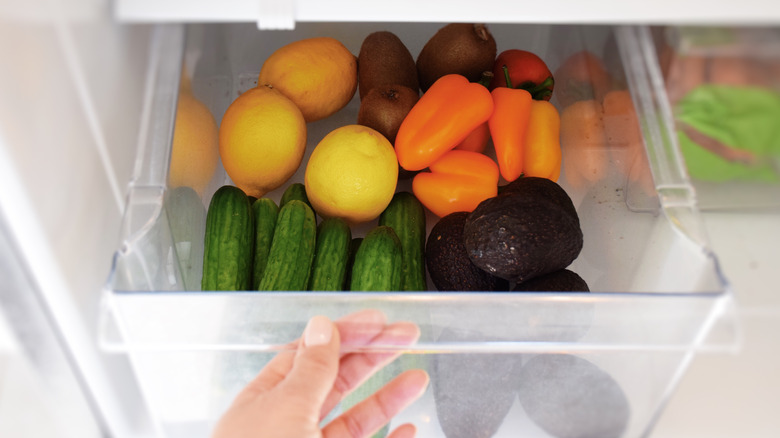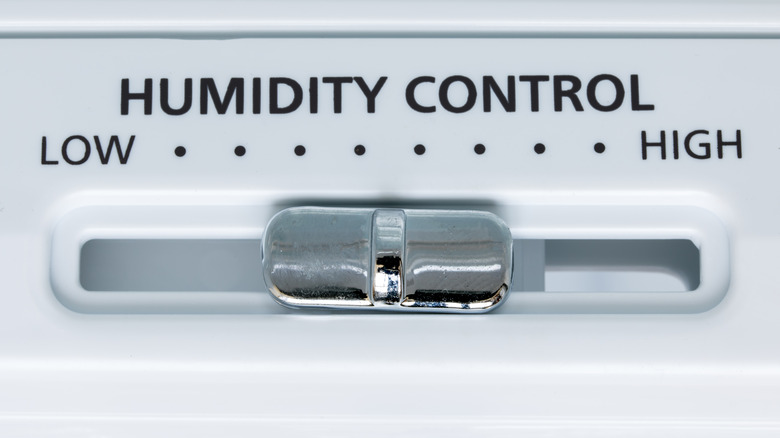How You Should Actually Be Using The Humidity Drawers In Your Fridge
Do you actually know the purpose of all of the drawers in your fridge? Most refrigerators have the same components and drawers inside. For example, there is a reason your sticks of butter should be tucked into the butter conditioner (yes, that's the name). While some might think the cover is to keep the cold air in, it's actually the opposite. According to Ed Baker for WGBH, the reason we have a little cover that goes over the butter is to keep cold air out. If the butter stays slightly warmer, it will be much easier to spread.
Crisper drawers are another addition that most fridges have for an important purpose. According to Whirlpool, this drawer is sometimes called a humidity drawer. The bin in your fridge helps preserve freshness and can potentially prolong the lifespan of your fruits and vegetables. This is because they are exposed to different levels of humidity. If you don't know what the humidity settings mean, however, or you just toss anything into those drawers, here is how you could be using them more efficiently.
Crisper drawers are not for storing your extra soda cans
If you have a smaller fridge, you may be tempted to store anything in your crisper drawers. However, they have an important purpose, and not just anything should be thrown into them.
Most crisper drawers contain adjustable humidity settings. When changing these settings, a small window opens up in the bin. The window closes more if placed in a high-humidity setting, and, similarly, it opens if set to a low-humidity setting.
The adjustable humidity makes crisper drawers perfect for storing fruits and veggies to help maintain freshness. The drawer that is set to higher humidity should contain veggies like cucumbers, fresh herbs, and leafy greens. These vegetables are ethylene-sensitive and prone to wilting — the higher humidity will allow them to stay crisp (via Whirlpool). Produce like avocados, apples, and other pitted fruit can easily rot. This means they should be stored in a low-humidity environment to encourage more airflow.
Now that you've learned about humidity settings, you can reduce the need to throw out rotting produce from your fridge prematurely. Your wallet will thank you.

